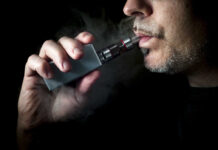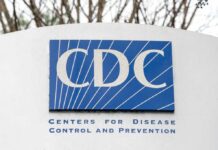
A new advisory warns of severe allergic reactions from airborne exposure to poison ivy, underscoring the importance of prevention for outdoor enthusiasts.
Story Overview
- Toxicodendron plants cause severe allergic reactions in most adults.
- Airborne exposure from burning is extremely hazardous.
- Prevention relies on identification, avoidance, and prompt decontamination.
- Public health guidance emphasizes protective measures for high-risk groups.
Understanding Toxicodendron Allergies
Poison ivy, poison oak, and poison sumac belong to the Toxicodendron genus and are native to North America. These plants contain urushiol, an oleoresin allergen responsible for the most common allergic contact dermatitis in the region. Clinical sensitivity affects 50–75% of adults, with tiny amounts of urushiol triggering rashes in 80–90% of individuals. This widespread sensitivity makes preventive strategies essential, particularly for outdoor enthusiasts and workers.
Exposure to these plants is common across the U.S., except in Alaska and Hawaii, with peak incidences during outdoor activities and post-storm events. The allergen is present in leaves, stems, and roots, causing reactions upon skin contact. Significant risks arise from indirect exposure through contaminated objects and pets, while burning these plants releases airborne urushiol, posing severe respiratory and skin hazards.
Poison ivy, along with poison oak and poison sumac, has an oily coating called urushiol, which often causes redness, swelling, and severe itching within four to 48 hours after contact with your skin.https://t.co/5aVBDxLmAL
— Ian Weissman, DO (@DrIanWeissman) August 11, 2025
Preventive Measures and Public Guidance
Public health guidance emphasizes several preventive measures to curtail exposure to these allergens. Identifying the distinct leaf morphology of these plants (e.g., “leaves of three, let it be”) aids in avoidance. Wearing protective clothing such as long sleeves and gloves, along with barrier creams, can further reduce risk. Prompt washing with soap and water after potential exposure and cleansing contaminated items are critical to minimize allergic reactions.
For those who develop rashes, treatment varies from topical corticosteroids for mild cases to systemic steroids for more severe conditions. It’s important to note that the rash itself is not contagious, and blister fluid does not spread the allergen. However, scratching can lead to further skin damage and increase infection risk.
Challenges and Future Directions
The persistence of this issue underscores the need for improved preventive strategies beyond avoidance. Despite ongoing research into vaccines or immunotherapy, these remain investigational. Current guidance focuses on education about plant identification, protective measures, and timely decontamination as the main defenses against urushiol exposure.
Occupational health officials and public agencies like NIOSH play crucial roles in disseminating safety protocols and educating at-risk populations. As research continues, there is hope for more effective prophylactic solutions to reduce the incidence and severity of Toxicodendron dermatitis in the future.
Sources:
JAMA clinical overview (2024) on prevalence, transmission, and annual burden
Consumer medical guidance (2025) clarifying symptoms, timing, and non-contagious nature
Dermatitis review (2019) on epidemiology, prevention, and vaccine research status
CDC/NIOSH guidance (2024) on worker risk, dose sensitivity, and burning hazards


















